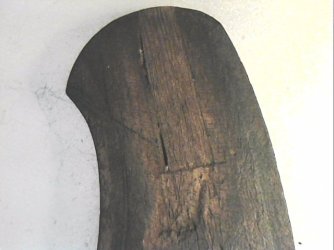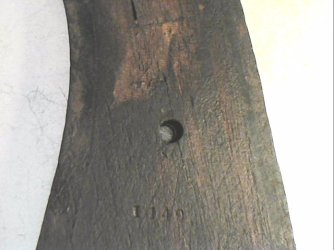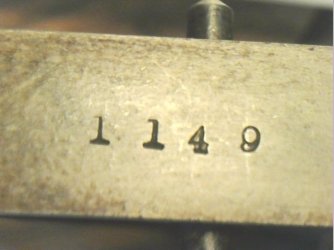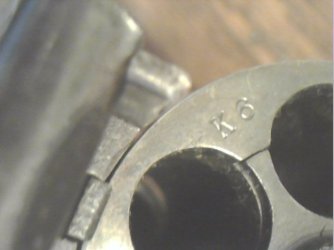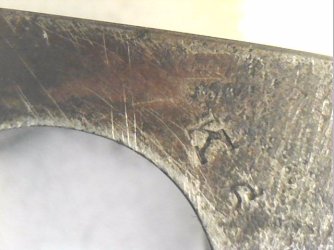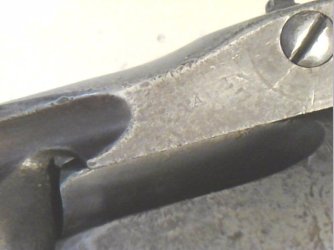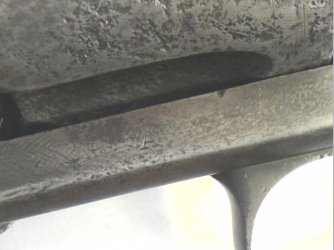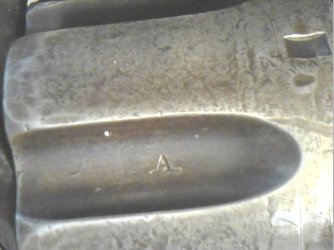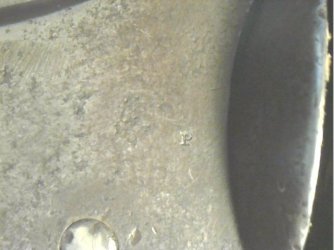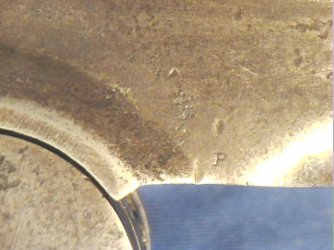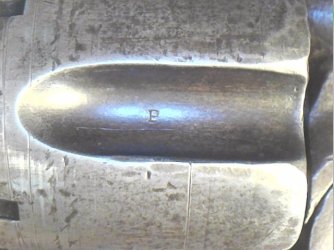- Joined
- Dec 1, 2022
- Messages
- 686
- Reaction score
- 1,122
Hi There,
Last month, I purchased a S&W Model 3 US American from
a prominent auction house and after careful examination, I have
determined that it is a forgery. I don’t believe the auction house
knowingly sold a counterfeit but if they had taken some pictures
from the straight-on side position, a major indicator would have
been readily visible.
The the piece of information that initially convinced me to bid
was that the serial number of this revolver (SN 1149). It is listed
in Charles Pate’s book on the S&W #3 American in the survivor’s
list and the notes match the description exactly (it has the
“stretched” barrel).
The first anomaly that struck me was the large barrel-to-cylinder
gap. Now when one studies the Model 3 evolution, the cylinder
was shortened just before the First Russian Contract (actually, the
cylinder + gas ring remained the same overall length; to reduce
fouling, the cylinder face was cut back about 1/32” to allow the
gas ring to protrude farther in an attempt to reduce the affects
from fouling). The first type cylinder was 1.45” front-to-back and
then it was shortened to 1.42”. Therefore, the cylinder is from a
later production Model 3.
The fitting code on the cylinder is K6 and this fitting code is on the
frame too. So, the frame and cylinder were part of the same gun.
The fitting code on the barrel is T3 and the latch has code is 9. From
this it is apparent the gun was assembled from several different re-
volvers.
Now, let’s look at the frame. The frame is stamped with the serial
number 1149 and this number is repeated on the inside of the right-
hand grip panel. The font of the numbers doesn’t quite match other
examples in my collection (although the font is the same on the butt
and the grip). It is apparent the right grip panel had a piece of it cut
out and a matching piece of walnut spliced in the location where the
grip serial number is usually stamped and the current serial number
is stamped below this area across the stock instead of in-line with it.
Ergo, the grips were re-stamped. And because this re-stamp on the
grip panel is a match for the stamp on the butt, the serial number on
the butt is a re-stamp too.
Now we come to the inspector stamp/marks from the Army
inspection process. The barrel, cylinder and frame have the
anticipated A’s and P’s and the top rib of the barrel has the
correct “US” stamp.
Closer inspection reveals the “A” on the barrel, cylinder and
frame were not made by the same stamp. The “A” on the barrel
looks correct but the “A” stamp on the frame is larger and the
“A” on the cylinder was made by a stamp that is different from the
other two. The “P” proof mark on the barrel again looks correct.
The “P” on the frame is a very close copy and looks right but it can’t
be. The “P” on the cylinder again appears to be larger than the other
two but the font style is a very good match but again it can’t be real.
Taking all this information together, it is clear to me that the barrel is
most likely from one of the original 1,000 US purchased Number 3
Americans but the rest has been doctored to match. Why the serial
number 1149 was chosen, I don’t know but the barrel has the “oil hole”
under the extractor rod housing and thus, they chose a serial number
under 1500 that was also on the list of revolvers purchased by the US
Army.
Cheers!
Webb
P.S. Here are the pics from the auction.
Last month, I purchased a S&W Model 3 US American from
a prominent auction house and after careful examination, I have
determined that it is a forgery. I don’t believe the auction house
knowingly sold a counterfeit but if they had taken some pictures
from the straight-on side position, a major indicator would have
been readily visible.
The the piece of information that initially convinced me to bid
was that the serial number of this revolver (SN 1149). It is listed
in Charles Pate’s book on the S&W #3 American in the survivor’s
list and the notes match the description exactly (it has the
“stretched” barrel).
The first anomaly that struck me was the large barrel-to-cylinder
gap. Now when one studies the Model 3 evolution, the cylinder
was shortened just before the First Russian Contract (actually, the
cylinder + gas ring remained the same overall length; to reduce
fouling, the cylinder face was cut back about 1/32” to allow the
gas ring to protrude farther in an attempt to reduce the affects
from fouling). The first type cylinder was 1.45” front-to-back and
then it was shortened to 1.42”. Therefore, the cylinder is from a
later production Model 3.
The fitting code on the cylinder is K6 and this fitting code is on the
frame too. So, the frame and cylinder were part of the same gun.
The fitting code on the barrel is T3 and the latch has code is 9. From
this it is apparent the gun was assembled from several different re-
volvers.
Now, let’s look at the frame. The frame is stamped with the serial
number 1149 and this number is repeated on the inside of the right-
hand grip panel. The font of the numbers doesn’t quite match other
examples in my collection (although the font is the same on the butt
and the grip). It is apparent the right grip panel had a piece of it cut
out and a matching piece of walnut spliced in the location where the
grip serial number is usually stamped and the current serial number
is stamped below this area across the stock instead of in-line with it.
Ergo, the grips were re-stamped. And because this re-stamp on the
grip panel is a match for the stamp on the butt, the serial number on
the butt is a re-stamp too.
Now we come to the inspector stamp/marks from the Army
inspection process. The barrel, cylinder and frame have the
anticipated A’s and P’s and the top rib of the barrel has the
correct “US” stamp.
Closer inspection reveals the “A” on the barrel, cylinder and
frame were not made by the same stamp. The “A” on the barrel
looks correct but the “A” stamp on the frame is larger and the
“A” on the cylinder was made by a stamp that is different from the
other two. The “P” proof mark on the barrel again looks correct.
The “P” on the frame is a very close copy and looks right but it can’t
be. The “P” on the cylinder again appears to be larger than the other
two but the font style is a very good match but again it can’t be real.
Taking all this information together, it is clear to me that the barrel is
most likely from one of the original 1,000 US purchased Number 3
Americans but the rest has been doctored to match. Why the serial
number 1149 was chosen, I don’t know but the barrel has the “oil hole”
under the extractor rod housing and thus, they chose a serial number
under 1500 that was also on the list of revolvers purchased by the US
Army.
Cheers!
Webb
P.S. Here are the pics from the auction.
Attachments
-
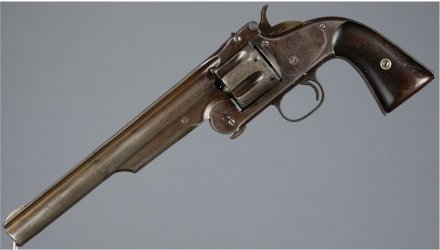 Screenshot 2025-04-29 at 18-17-49 U.S. Smith & Wesson No. 3 First Model American Revolver Rock...jpg105.4 KB · Views: 35
Screenshot 2025-04-29 at 18-17-49 U.S. Smith & Wesson No. 3 First Model American Revolver Rock...jpg105.4 KB · Views: 35 -
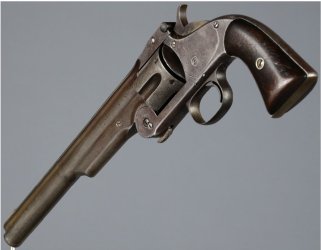 Screenshot 2025-04-29 at 18-18-19 U.S. Smith & Wesson No. 3 First Model American Revolver Rock...jpg85.8 KB · Views: 32
Screenshot 2025-04-29 at 18-18-19 U.S. Smith & Wesson No. 3 First Model American Revolver Rock...jpg85.8 KB · Views: 32 -
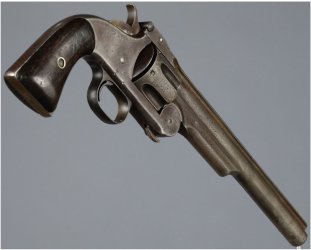 Screenshot 2025-04-29 at 18-18-40 U.S. Smith & Wesson No. 3 First Model American Revolver Rock...jpg86.1 KB · Views: 30
Screenshot 2025-04-29 at 18-18-40 U.S. Smith & Wesson No. 3 First Model American Revolver Rock...jpg86.1 KB · Views: 30 -
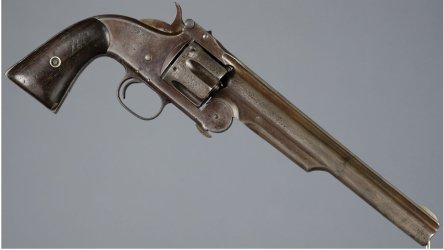 Screenshot 2025-04-29 at 18-19-00 U.S. Smith & Wesson No. 3 First Model American Revolver Rock...jpg118.6 KB · Views: 32
Screenshot 2025-04-29 at 18-19-00 U.S. Smith & Wesson No. 3 First Model American Revolver Rock...jpg118.6 KB · Views: 32 -
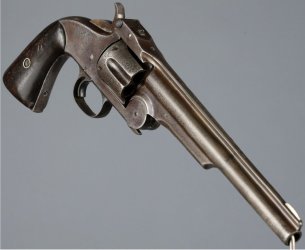 Screenshot 2025-04-29 at 18-20-17 U.S. Smith & Wesson No. 3 First Model American Revolver Rock...jpg87.2 KB · Views: 29
Screenshot 2025-04-29 at 18-20-17 U.S. Smith & Wesson No. 3 First Model American Revolver Rock...jpg87.2 KB · Views: 29 -
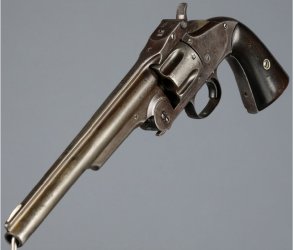 Screenshot 2025-04-29 at 18-22-18 U.S. Smith & Wesson No. 3 First Model American Revolver Rock...jpg69.7 KB · Views: 27
Screenshot 2025-04-29 at 18-22-18 U.S. Smith & Wesson No. 3 First Model American Revolver Rock...jpg69.7 KB · Views: 27 -
 Screenshot 2025-04-29 at 18-23-23 U.S. Smith & Wesson No. 3 First Model American Revolver Rock...jpg20.1 KB · Views: 34
Screenshot 2025-04-29 at 18-23-23 U.S. Smith & Wesson No. 3 First Model American Revolver Rock...jpg20.1 KB · Views: 34

